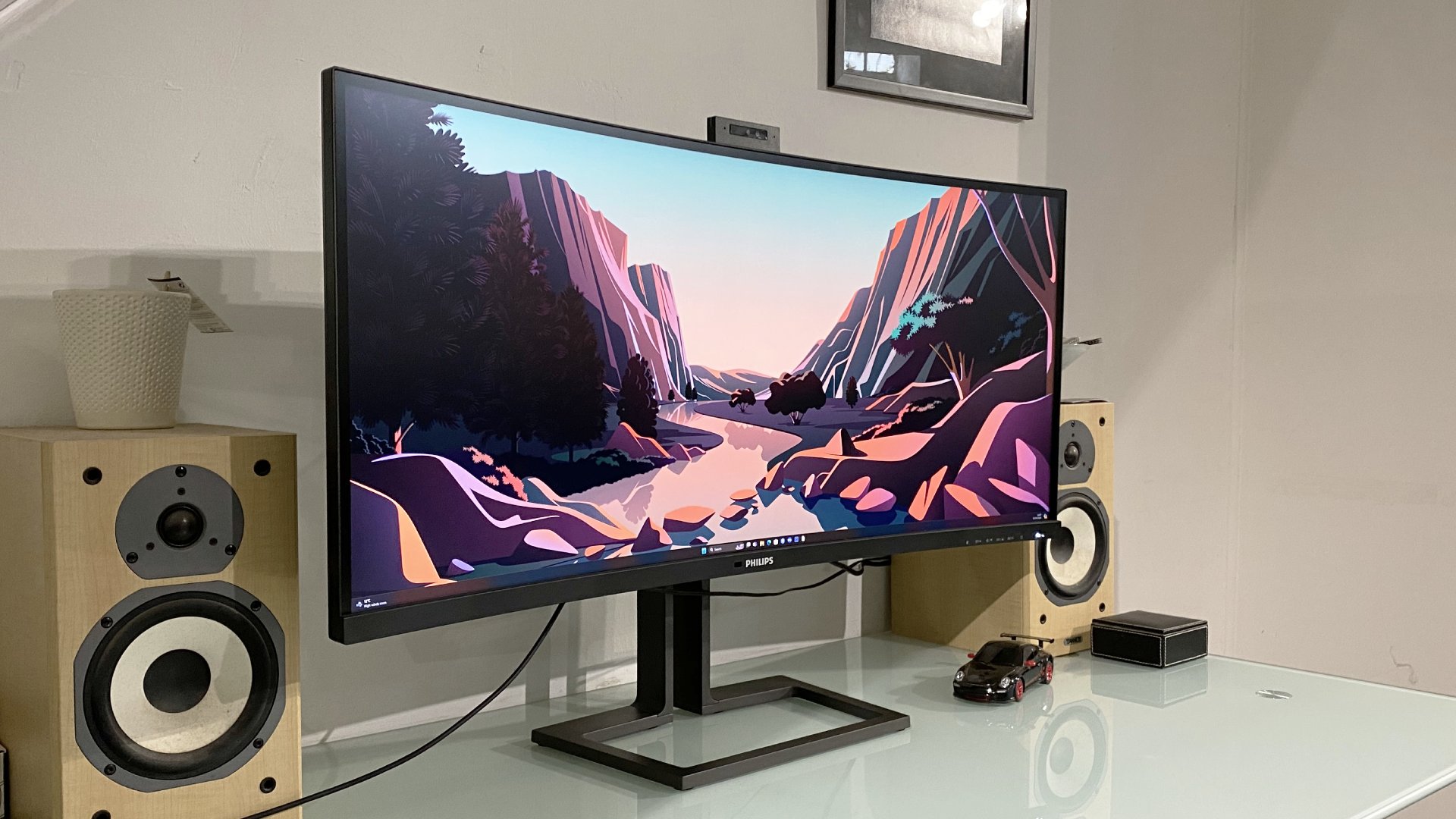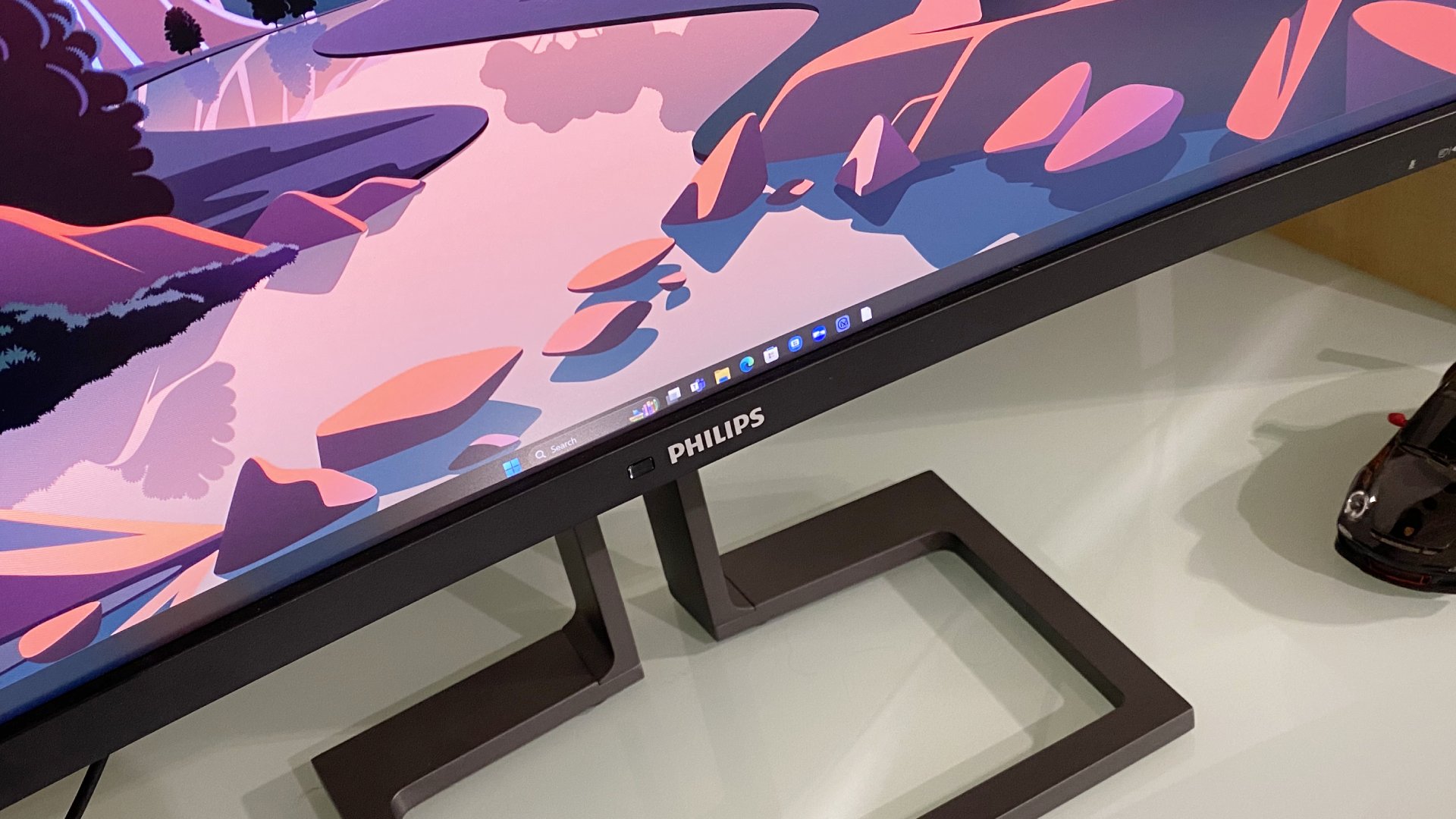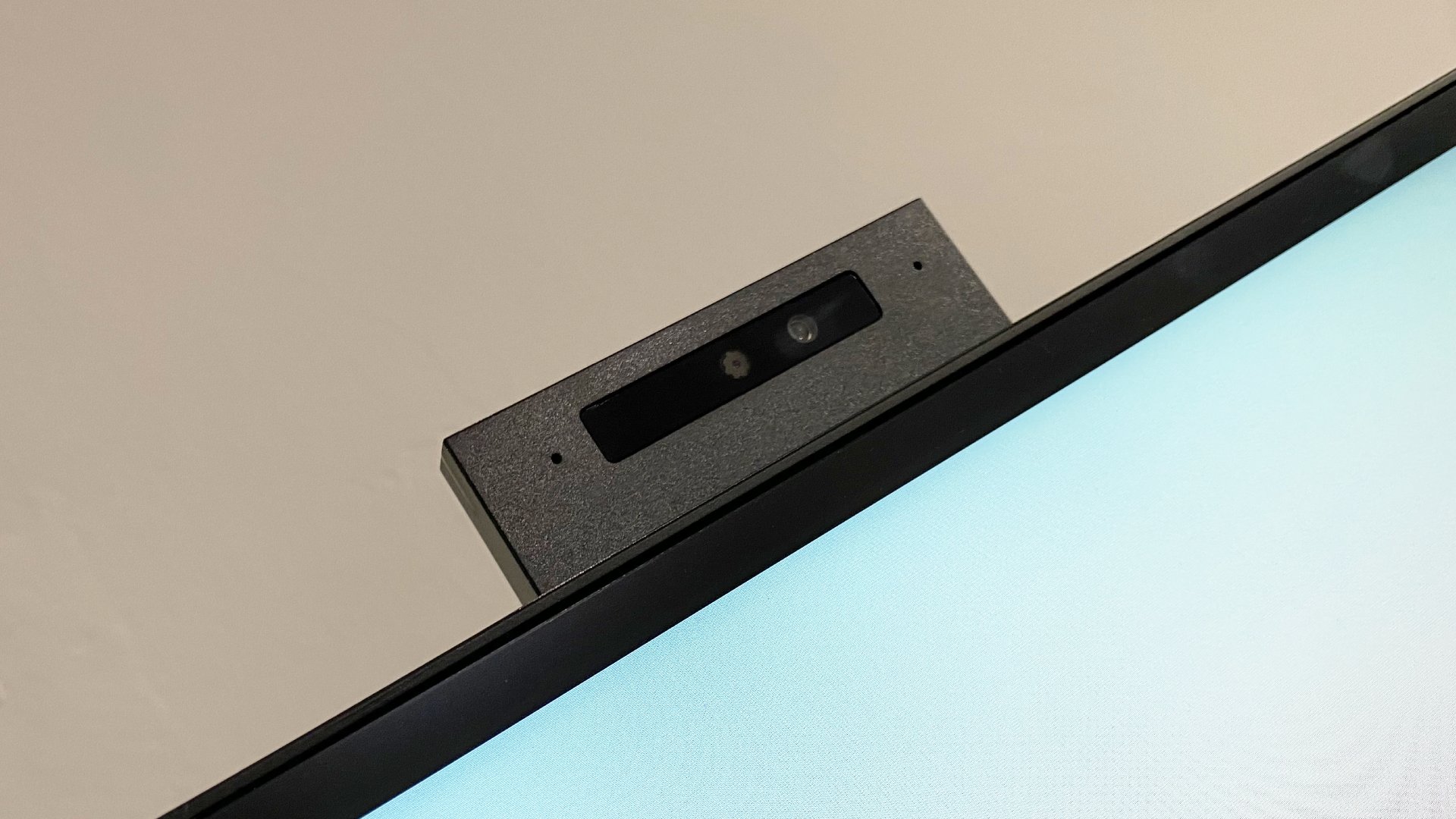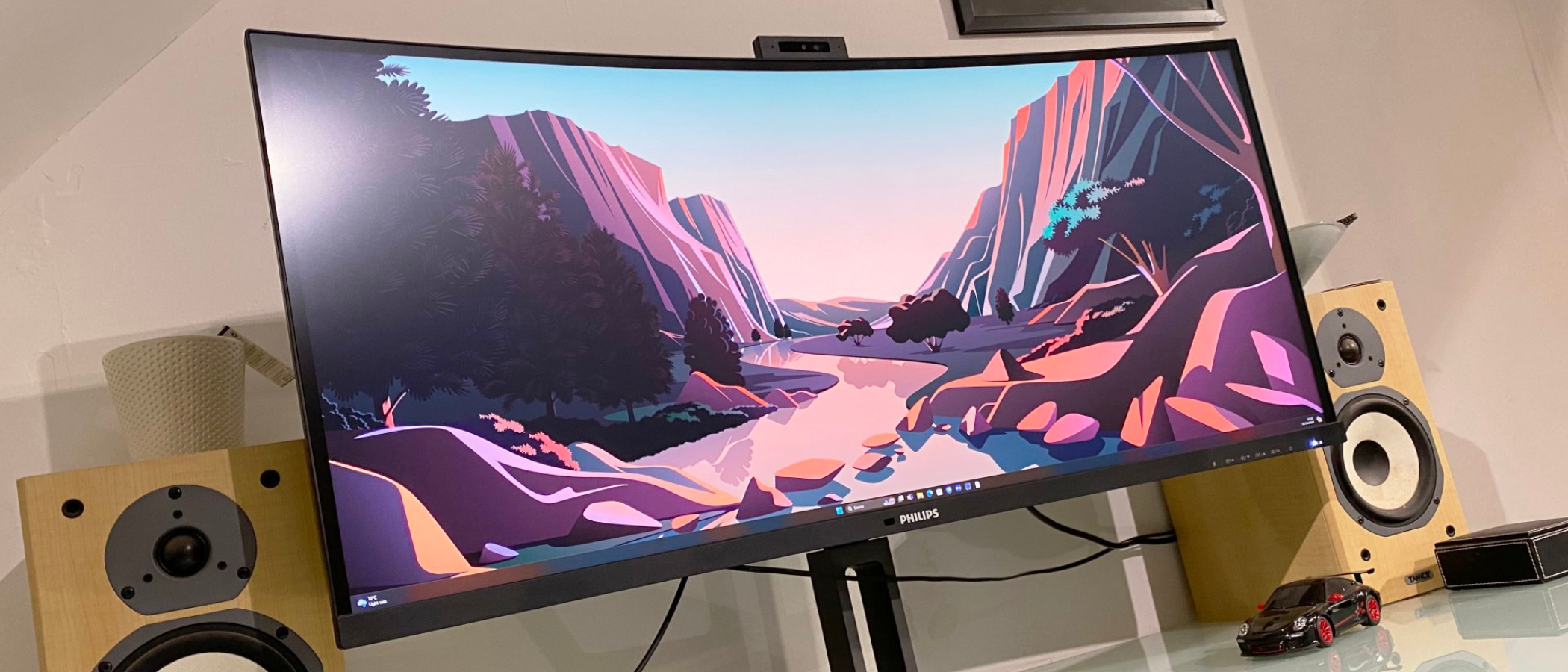TechRadar Verdict
This is a huge, incredibly impressive 40-inch display that comes with some caveats. But for a certain kind of all-purpose high-DPI computing on a really epic scale, this 5K2K monitor is about as appealing as it gets.
Pros
- +
Huge 40-inch panel
- +
Excellent pixel density
- +
Fantastic connectivity
Cons
- -
Relatively low-fidelity image quality
- -
Very limited HDR support
- -
Way more expensive than a 32-inch 4K panel
Why you can trust TechRadar
What's the ultimate productivity monitor form factor? 32-inch 4K? Nice, but arguably a little constraining when it comes to running lots of app windows side by side. 34-inch ultrawide, then? Maybe, but the pixel density isn't great. The same goes for one of those 49-inch 32:9 aspect beasts. No, what you want is the new Philips 40B1U6903CH, all 40 inches and five thousand pixels of it.
That's five thousand pixels in just the horizontal, of course. This is a 5K2K panel, so that's 5,120 by 2,160 pixels for a grand total of 11 million pixels overall. Phew. To put that into context, this is really a 32-inch 4K monitor with some extra width. The pixel density is exactly the same, but the panel aspect is extended here from 16:9 to 21:9.
The immediate upshot is that where a 16:9 32-incher is most comfortable with two app windows side by side, you can make the jump to three with this Philips while maintaining the same crispy fonts and image detail.
Having tested many of the best 5K and 8K monitors and best business monitors, we can safely say this is a pretty large display. So ergonomics do come into the, well, picture in a manner that arguably doesn't quite apply to a conventional 32-inch 4K monitor.
More on that in a moment. Size and resolution aside, this very much a productivity panel. So there's no high refresh or true HDR sizzle, but there is lots of connectivity. Time to find out more.
Philips 40B1U6903CH: Design & features

- Sober-suited but well-built
- Connectivity includes Thunderbolt 4 and KVM switch
- It's big and needs plenty of desk space
Panel size: 40-inch
Panel type: IPS
Resolution: 5,120 x 2,160
Brightness: 300 cd/m2
Contrast: 1,000:1
Pixel response: 4ms
Refresh rate: 75Hz
Colour coverage: 134% sRGB
HDR: HDR
Vesa: 100mm x 100mm
Inputs: DisplayPort 1.4 x1, HDMI 2.0 x1, Thunderbolt 4 / USB-C with 90W power delivery x1
Other: KVM switch, Thunderbolt 4 out, 5MP webcam with Windows Hello
The Philips 40B1U6903CH is an out-and-out productivity panel. And that's just fine by us. It's very much all business when it comes to the design and aesthetic. But it's well built and about as ergonomic as a display this big can be.
That includes a headphone hook on the left of the panel and an integrated pop-up 5MP webcam up top. The latter supports Windows Hello facial recognition, which is a nice touch. Then there's the Thunderbolt 4 / USB-C interface which supports 40Gbps, plus up to 90W of power delivery for single-cable connectivity to a laptop.
There's a second Thunderbolt 4 port, too, which enables multi-monitor daisy-chaining. All that combined with the built-in KVM switch - so no need to worry about best KVM Switches deals - will really help with minimising cable clutter. At 40 inches, of course, this is still a beast of a monitor for which you'll require plenty of desk space. For some, the sheer size will simply be too much. But all those features will help you integrate the Philips 40B1U6903CH neatly into your workspace.
The panel also has a gentle 2500R curve, which is generally desirable on an ultrawide monitor this big. It means that you're not viewing the extremities of the panel at too oblique an angle. The only arguable ergonomic snafu is that the audio-out port is located on the side of the panel. That's fine for headphones, but less optimal for long-term usage connected to some desktop speakers.
Philips 40B1U6903CH: Performance

- Huge size with sharp pixel density
- Nice IPS panel but not high fidelity
- Limited HDR capability
For pure image quality, this is a fairly middling IPS monitor. While the panel will process an HDR10 signal, there's no true HDR support or local dimming and the brightness tops out at 300 nits. Similarly, the refresh rate tops out at 75Hz and the response is rated at 4ms.
Philips doesn't quote DCI-P3 colour coverage, so it likely isn't anything special. This isn't a monitor pitched at professional content creation like video or image editing. The lack of true HDR support won't matter for most all-round computing tasks, but the mere 300 nits brightness could be more of an issue. It's plenty for most working environments. But if you like a really bright and punchy panel and especially if you use your PC in a location with lots of ambient light, 300 nits could be marginal. Were this a gaming monitor, those shortcomings would be more of an issue. As it is, they're something to be aware of regarding your needs and workflows.
The main benefit here, then, is all those pixels from the 40-inch, 5,120 by 2,160 resolution panel. If what you've been waiting for is a large format ultrawide monitor that doesn't compromise on pixel density, well, this is it. Fonts are just as crisp and sharp as a 32-inch 4K panel and there's just oodles of both working space and image detail.

These days, Windows does a much better job of handling a panel like this in terms of the DPI settings. For most users, setting the scaling to 125% is probably a nice compromise between working space and legibility. Texts and icons are a bit teensy weensy when the scaling is set to 100%.
Moreover, this is a fantastic display for getting stuff done. The combination of huge working space with the sharpness and precision of the 5K2K resolution is a bit of a revelation. A "regular" 32-inch 4K monitor feels very limiting by comparison.
This monitor can work well with Macs, too. The catch involves the way MacOS does scaling. Without getting into the weeds over the details, to get the best results, you'll need a Mac with one of the M Pro, Max or Ultra chips. The base M chips can drive this monitor at full native. However, they have more limited support for scaling options while maintaining high-DPI Retina functionality. In really simple terms, this display is one of the best monitors for MacBook Pro, Mac Studio, and Mac Pro, but less so with the MacBook Air and Mac mini.
Philips 40B1U6903CH: Final verdict

No question, the Philips 40B1U6903CH comes with a few caveats. There's no high refresh, almost no HDR support, not a huge amount of pure backlight power. The IPS panel isn't terribly high fidelity, either, so serious content creation pros will need to look elsewhere. The ergonomics won't suit everyone, either, this is a very large display, and the high resolution is a little problematic with low-end Apple Mac computers.
But if what you want is image precision, in terms of high pixel density, on a much larger scale, this monitor is a revelation. Even a 32-inch 4K monitor feels limited and constraining by comparison.
You also get a really strong feature set with excellent connectivity that includes Thunderbolt 4 and a KVM switch. The integrated webcam with Windows Hello facial recognition is welcome, too. All of which means that for a certain kind of all-purpose precision productivity computing on a really epic scale, this monitor is about as appealing as it gets.
All of which means that the main sticking point will be pricing. You can get a very nice 4K 32-inch productivity panel for less than one third the cost of this monitor. So, it's a huge premium for the ultrawide experience. But then in terms of size and pixel density, this is ultimately an extremely high-end option. And that's always going to cost.
Pair the Philips 40B1U6903CH monitor with the best business computers - tested, reviewed, and rated by us
Technology and cars. Increasingly the twain shall meet. Which is handy, because Jeremy (Twitter) is addicted to both. Long-time tech journalist, former editor of iCar magazine and incumbent car guru for T3 magazine, Jeremy reckons in-car technology is about to go thermonuclear. No, not exploding cars. That would be silly. And dangerous. But rather an explosive period of unprecedented innovation. Enjoy the ride.
